Headache? Achy joints? Runny nose? Itchy eyes? You’re probably thinking you’ve got a cold. It might just be that your indoor air quality stinks – literally.
Indoor air quality can be a LOT more polluted than the air outside. That’s bad news for those of us who live inside – which, I think, is everyone reading this post.
⇒ In addition to making us feel like we’ve got a cold, polluted indoor air can zap our energy and turn us into cranky grumps.
⇒ If you have asthma or another respiratory illness, poor indoor air quality will make them worse.
⇒ Lousy indoor air quality can even contribute to cancers caused by exposure to the toxic chemicals that pollute the air we breathe when we’re inside.
Because indoor air quality causes so many health problems, I’ve teamed up with the smart folks at HomeLab to make it easier for you to figure out what’s actually in the air you’re breathing at home and how you can create a Healthy Home.
Indoor Air Pollution Sources
• cooking
• cleaning
• fireplaces
• furnaces
• mold and mildew build-up
• paint
• carpeting and furniture
• food waste
• synthetic air fresheners
• furniture polishes
The HomeLab Healthy Home Program to Create a Non-Toxic Home

HomeLab was started by Nate Bellino.
After working in energy efficiency for over a decade, Nate realized that the air inside our homes was pervasively bad.
His wife battled cancer twice and his daughter has asthma. When trying to create a healthy home for his family, he found trying to remove toxins and pollutants exceedingly difficult.
He started HomeLab so that more people could easily create a healthy home on any budget.
Nate’s ingenious Healthy Home Program is designed to help you make sure that the air you’re breathing is actually worth breathing!
♦ Identify
♦ Monitor
♦ Act
♦ Keep Monitoring!
Step 1 – Identify – First and foremost, you need to know what’s in the air you’re breathing. Once you sign up for HomeLab, you’ll get a monitor that will give you vital readings that show you what invisible toxins and pollutants are lurking in your home’s air. (NOTE: You can sign up for a Healthy Home Program for less than $10/month.)
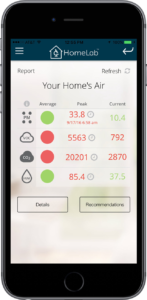
Step 2 – Monitor – Once you know what’s in your air, you can use the monitor together with the HomeLab smart phone app to view toxin levels so you’ll know at any given time where problems exist and whether you need to act.
Step 3 – Take Action – HomeLab’s team of “Home Doctors” – experts with deep knowledge and experience working on indoor air quality – will prescribe the most effective ways for you specifically to create a healthy home that is right for you. They always start with no-cost activities that are surprisingly simple, some of which can remove up to 40% of the toxins and pollutants found in your home’s indoor air.
Step 4 – Continue to Monitor – “Our monitoring service places an effective shield against incoming pollution,” reports Nate. “We remotely observe your air quality monitor and notify you of critical spikes or alarming trends, proactively providing solutions and partnering with you until we kick pollution to the curb.”
Doesn’t that sound like a good idea?!
“Air quality is ever fluctuating in a home,” says Nate. “Different seasons, outdoor pollution events, different rooms all contribute to spikes. We start people off with simple activities and continue guiding them in creating a non-toxic home.”
Once you’ve got a handle on your home, you can continue to use the app as a sort of air quality watchdog.
Free eBook!
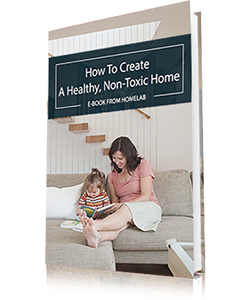
Here’s what’s in it:
√ A list of the most common forms of toxins and pollutants
√ A description of how different products we have at home add to indoor air pollution
√ Common products and services to avoid
√ A step-by-step process for creating a healthy, non-toxic home
√ Recommendations for apartments and rentals
Here’s the link to get your free copy.
25% Discount for the Big Green Purse Community
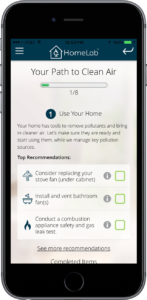
As a special bonus for the Big Green Purse community, HomeLab is offering you an 25% discount off either the start-up or the premium package. You can check out the advantages of each one right here.
By the way, now is the perfect time to monitor your indoor air. Most of us have either closed our windows tight against the cold weather or , if you live in the south, buttoned your house up to keep air conditioned in.
Either way, the air could be stagnating a bit, which might actually make indoor air pollution worse.
Why not see what’s in your air, and take steps to fix it?
You’ll feel better and stay healthier, right away and in the long term, too.
DISCLOSURE: We’re partnering with Home Lab because we know how important it is to breathe clean indoor air. We will earn a small commission if you sign up for the Healthy Home Program, but we’d recommend Home Lab regardless because we want you to be well. Thanks!





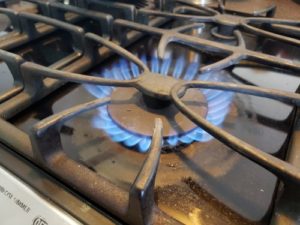
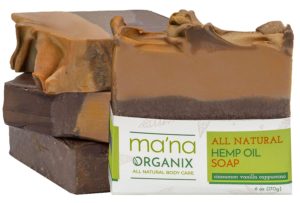
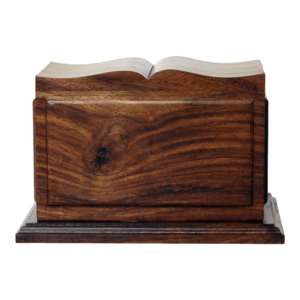

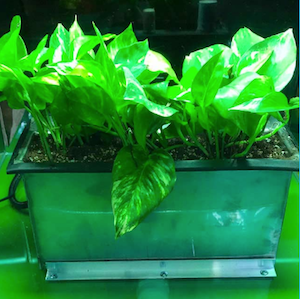








2 thoughts on “You Don’t Have a Cold. Your Indoor Air Quality Stinks.”
Thank you so much for all this important info – people forget how important INDOOR air quality is. Add to the list that recent studies show INDOOR concentrations of CO2 to which America workers are typically exposed alter congitive functioning – esp our abilty to process informaion, strategize, and manage a crisis.
I am looking forward to learning more about the healthy home program
Thanks, Lise. I’m always shocked to find out how much junk is INSIDE, not just outside. Fortunately, there’s a lot we can do to clean things up in our homes. Monitoring to figure out what we need to address is helpful; not using aerosols and synthetic fragrances is important, too. But you know all that!
Comments are closed.